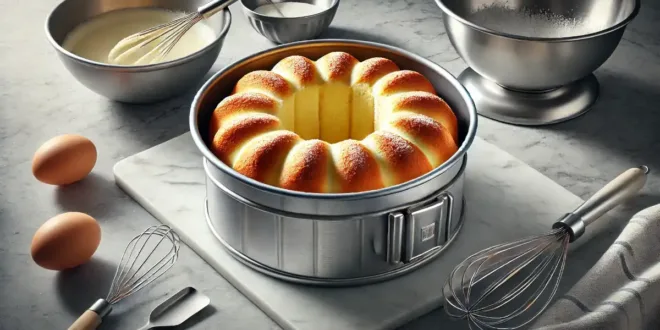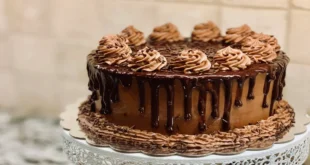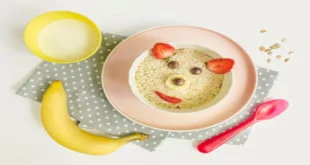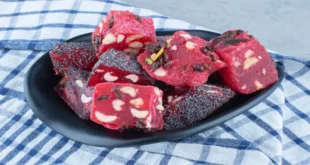I. Introduction
A. Overview of Angel Food Cake
Angel food cake is a classic dessert known for its light, airy texture and delicate flavor. This cake, often associated with special occasions and summer gatherings, holds a special place in American baking history. Originating in the United States during the late 19th century, angel food cake quickly became popular due to its unique texture, achieved without the use of butter or oil. The cake’s defining characteristics—its tall, fluffy structure and slightly chewy crust—result from the careful incorporation of whipped egg whites into the batter.
The texture and structure of angel food cake are its most celebrated features. Achieving the perfect consistency requires precision in both the preparation of the batter and the baking process. Unlike other cakes that rely on fats for moisture and richness, angel food cake depends solely on egg whites for its lift, making it crucial to use the right equipment, particularly the right pan. The choice of pan directly influences the cake’s rise, texture, and overall success, making it an indispensable tool for any baker aiming to create this iconic dessert.
B. Importance of Using the Right Pan
The pan used to bake angel food cake is not just another piece of kitchen equipment; it’s a crucial factor in determining the cake’s final outcome. Angel food cake requires a specific type of pan to achieve its signature lightness and height. A regular cake pan simply won’t do the job. The unique design of the angel food cake pan ensures that the cake rises evenly, cools properly, and retains its delicate texture. This pan is specifically engineered to support the cake’s structure during and after baking, making it an essential tool for anyone serious about making this dessert.
Understanding what makes an angel food cake pan unique, how it differs from other types of pans, and how to use it correctly is key to mastering the art of baking this ethereal cake. In the following sections, we’ll explore the intricacies of the angel food cake pan, from its design and materials to its role in the baking process and beyond.
II. What is an Angel Food Cake Pan?
A. Definition and Basic Design
An angel food cake pan is a specialized baking pan designed explicitly for making angel food cakes. It is typically round and includes a central tube that extends upward through the middle of the pan, creating a hole in the center of the cake. This central tube plays a vital role in the baking process by allowing heat to circulate through the middle of the cake, ensuring even baking.
The pan’s design often includes straight sides that help the cake batter cling and rise during baking. The sides of the pan are usually taller than those of regular cake pans, which supports the cake as it rises to create its characteristic height. Most angel food cake pans are made from aluminum, chosen for its superior heat conduction properties, which promote even baking. Some pans feature non-stick coatings, while others are uncoated, catering to different baker preferences.
B. Differences Between Angel Food Cake Pans and Other Cake Pans
Angel food cake pans differ significantly from other types of cake pans, such as Bundt pans, regular round cake pans, and loaf pans. Unlike Bundt pans, which are also tube-shaped, angel food cake pans have smooth, unadorned surfaces without the decorative ridges commonly found in Bundt pans. This smooth surface allows the delicate batter to climb evenly up the sides without catching on ridges, which could cause the cake to tear when removed from the pan.
Compared to regular round cake pans, angel food cake pans have a much deeper profile and lack the flat bottom that regular pans possess. This depth, along with the central tube, is crucial for supporting the cake’s structure as it bakes and cools. Unlike loaf pans, which are rectangular and typically used for denser cakes or breads, angel food cake pans are round and designed specifically for light, airy batters. The unique design of the angel food cake pan ensures that the cake bakes evenly and retains its shape, making it a must-have for this particular type of cake.
III. Detailed Features of an Angel Food Cake Pan
A. Tube Shape
The tube shape of the angel food cake pan is perhaps its most defining feature. The central tube is essential for even baking, as it allows heat to reach the center of the cake, which would otherwise remain undercooked in a deep, solid pan. The tube also provides structural support to the cake as it rises, ensuring that the batter climbs evenly and maintains its height.
This shape contributes to the cake’s characteristic appearance—a tall, cylindrical cake with a hole in the center. The tube’s presence ensures that the cake bakes uniformly, preventing the soggy or dense center that can occur if the cake is baked in a solid pan. By promoting even heat distribution, the tube shape helps achieve the cake’s delicate crumb and ensures a consistent bake throughout.
B. Removable Bottom
Many angel food cake pans feature a removable bottom, which is another critical design element. This removable bottom allows the baker to lift the entire cake out of the pan without damaging its delicate structure. Because angel food cake is so light and airy, it can be easily torn or crushed if handled too roughly. The removable bottom provides a way to gently separate the cake from the pan, ensuring that it retains its shape and texture.
This feature is particularly useful when it comes to cooling the cake. Once baked, the cake is often inverted to cool, allowing gravity to help maintain its height. A removable bottom makes it easier to release the cake from the pan after it has cooled, reducing the risk of damage during this critical step.
C. Non-Stick vs. Uncoated Pans
Angel food cake pans come in both non-stick and uncoated varieties, each with its pros and cons. Non-stick pans are popular because they make it easier to release the cake after baking. The non-stick coating reduces the likelihood of the cake sticking to the sides of the pan, which can cause tearing or crumbling.
However, some bakers prefer uncoated pans, arguing that the batter needs to cling to the sides of the pan to rise properly. In an uncoated pan, the batter can “grip” the sides better, which can help the cake achieve its full height. Additionally, uncoated pans can be more durable over time, as non-stick coatings may wear off with repeated use. The choice between non-stick and uncoated pans often comes down to personal preference and experience, with both types offering unique benefits depending on the baker’s needs.
D. Material Considerations
The material of the angel food cake pan is another important factor to consider. Aluminum is the most commonly used material for these pans because it conducts heat evenly, which is crucial for the delicate baking process of angel food cake. Aluminum’s excellent heat conduction helps ensure that the cake bakes evenly without hotspots, which could lead to an uneven texture.
Steel is another material used in some angel food cake pans. While steel pans are often heavier and more durable than aluminum pans, they may not conduct heat as evenly, which can affect the cake’s texture. Some pans are also made from silicone, offering a flexible and non-stick surface. However, silicone pans may not provide the same structural support as metal pans, potentially affecting the cake’s rise and shape.
E. Feet or Legs for Inversion
Many angel food cake pans are equipped with small feet or legs around the rim, a feature designed specifically for cooling the cake. After baking, the cake is often inverted to cool, which helps it maintain its height and prevents it from collapsing. The feet or legs on the pan allow the inverted cake to cool evenly by ensuring that air can circulate freely around it.
The science behind this cooling method is straightforward: by cooling the cake upside down, the structure is preserved, and the cake retains its light, airy texture. The feet on the pan ensure that the cake is elevated off the surface, preventing it from becoming soggy or collapsing as it cools. This feature is crucial for achieving the perfect angel food cake, making it an important consideration when choosing a pan.
IV. The Science Behind Using an Angel Food Cake Pan
A. Role of the Pan in Cake’s Rise and Texture
The design of the angel food cake pan plays a crucial role in the cake’s rise and texture. The tube shape and straight sides of the pan allow the batter to climb evenly, which is essential for achieving the cake’s characteristic height and lightness. As the batter rises, it clings to the sides and the central tube, allowing it to expand and set properly.
This rise is further supported by the pan’s material, which ensures even heat distribution. The pan’s design and material work together to create a uniform bake, which is essential for the cake’s delicate crumb. Without the right pan, the cake may not rise properly, leading to a dense, uneven texture that lacks the airy lightness of a traditional angel food cake.
B. Heat Distribution and Baking Evenness
Even heat distribution is critical when baking angel food cake, and the pan’s material and design play a key role in this process. Aluminum, the most common material for angel food cake pans, is known for its excellent heat conduction, which ensures that the cake bakes evenly. This even baking is crucial for achieving a consistent texture throughout the cake, preventing dense or undercooked areas.
The tube in the center of the pan also contributes to even baking by allowing heat to reach the center of the cake. In a pan without a central tube, the cake’s edges might bake more quickly than the center, leading to an uneven bake. The design of the angel food cake pan ensures that heat is distributed evenly, resulting in a cake with a uniform texture and consistent crumb.
C. Cooling Process
Cooling is a critical step in the angel food cake baking process, and the design of the pan plays a significant role in this stage as well. After baking, the cake is typically inverted to cool, which helps it maintain its height and prevents it from collapsing. The pan’s feet or legs allow the cake to cool upside down while remaining elevated, ensuring that air can circulate around the cake and cool it evenly.
This cooling process is essential for preserving the cake’s structure and texture. If the cake is not cooled properly, it can collapse or become dense, losing the light, airy quality that defines angel food cake. The design of the angel food cake pan facilitates proper cooling, making it an indispensable tool for achieving the perfect cake.
V. Choosing the Right Angel Food Cake Pan
A. Factors to Consider When Buying
When choosing an angel food cake pan, several factors should be considered to ensure the best baking results. First, the size and capacity of the pan are important, as they should match the recipe being used. Most standard angel food cake pans have a capacity of 10 to 12 cups, which is suitable for most recipes. However, some pans come in smaller or larger sizes, so it’s essential to choose a pan that fits the specific needs of the recipe.
Material is another key consideration. Aluminum pans are the most popular choice due to their excellent heat conduction, but steel and silicone options are also available. Each material has its pros and cons, so it’s important to choose a pan that aligns with your baking preferences. Additionally, consider whether you prefer a non-stick or uncoated pan, as this can affect the cake’s rise and ease of removal.
Brand reputation and user reviews can also be helpful when selecting a pan. Established brands like Wilton, Nordic Ware, and Chicago Metallic are known for producing high-quality bakeware, and their angel food cake pans are no exception. Reading reviews and comparing features can help you choose a pan that meets your needs and offers reliable performance.
B. Popular Brands and Models
Several brands are known for producing high-quality angel food cake pans, each offering unique features and benefits. Wilton, for example, is a popular brand known for its durable aluminum pans with a non-stick coating. Wilton pans are widely available and are a favorite among home bakers for their consistent results and ease of use.
Nordic Ware is another well-known brand, offering both non-stick and uncoated pans made from heavy-duty aluminum. Nordic Ware pans are praised for their even heat distribution and durability, making them a reliable choice for serious bakers. Chicago Metallic also offers a range of angel food cake pans, including options with a removable bottom and non-stick coating. Chicago Metallic pans are known for their sturdy construction and are often recommended for their versatility and ease of cleaning.
Comparing these brands and models can help you find the best pan for your baking needs, whether you’re a beginner or an experienced baker.
C. Budget vs. High-End Options
Angel food cake pans are available at a range of price points, from budget-friendly options to high-end models. Budget pans, typically priced under $20, are often made from lighter-weight materials and may not offer the same level of durability or even heat distribution as more expensive options. However, they can still produce good results, especially for occasional bakers or those just starting.
High-end pans, which can cost $30 or more, are usually made from heavier-gauge materials and offer features like a removable bottom or a high-quality non-stick coating. These pans are designed for durability and consistent performance, making them a good investment for serious bakers who plan to use them frequently.
When choosing between budget and high-end options, consider how often you plan to bake angel food cakes and what features are most important to you. While a budget pan can work well for occasional use, investing in a high-quality pan may be worth it if you bake frequently or want to ensure the best possible results.
VI. Tips and Tricks for Using an Angel Food Cake Pan
A. Preparing the Pan for Baking
Preparing the pan properly is crucial for achieving the best results when baking an angel food cake. Unlike many other cakes, angel food cake batter should not be placed in a greased pan, as the batter needs to cling to the sides of the pan to rise properly. If using an uncoated pan, ensure it is clean and free of any residue that could affect the batter’s ability to climb.
Preheating the oven is also important, as the cake needs to start baking in a hot environment to rise correctly. Place the pan on a lower rack in the oven to ensure even heat distribution. If using a pan with a removable bottom, ensure it is properly assembled before adding the batter.
B. Techniques for Perfect Angel Food Cake
Achieving the perfect angel food cake requires attention to detail throughout the baking process. When mixing the batter, it’s important to beat the egg whites to the right consistency—stiff peaks that are glossy but not dry. Over-beating or under-beating the egg whites can affect the cake’s rise and texture.
When pouring the batter into the pan, do so gently to avoid deflating the whipped egg whites. Use a spatula to smooth the top of the batter before placing the pan in the oven. Avoid opening the oven door during the first 30 minutes of baking, as this can cause the cake to collapse. Bake until the top is golden brown and the cake springs back when lightly touched.
C. Common Mistakes and How to Avoid Them
Several common mistakes can lead to disappointing results when baking angel food cake. Over-greasing the pan is a frequent error that can prevent the cake from rising properly. As mentioned earlier, the batter needs to cling to the sides of the pan to achieve its full height, so avoid greasing the pan.
Another common mistake is improper cooling. Cooling the cake right-side up can cause it to collapse, as the delicate structure is still setting. Always invert the pan immediately after removing it from the oven and allow the cake to cool completely in this position.
Lastly, be careful not to under-bake the cake. If the cake is removed from the oven too early, it may collapse or have a gummy texture. Ensure that the cake is fully baked by testing it with a toothpick or cake tester before removing it from the oven.
D. Cleaning and Maintaining the Pan
Proper cleaning and maintenance of the angel food cake pan are essential for preserving its performance and longevity. After each use, clean the pan with warm, soapy water and a soft sponge or cloth. Avoid using abrasive scrubbers or harsh chemicals, as these can damage the pan’s surface, especially if it has a non-stick coating.
If the pan has a removable bottom, separate the two pieces and clean them thoroughly. Ensure the pan is completely dry before reassembling it and storing it to prevent rust or corrosion. Store the pan in a cool, dry place, and avoid stacking heavy items on top of it to prevent warping or damage.
VII. Alternative Uses for an Angel Food Cake Pan
A. Baking Beyond Angel Food Cake
While the pan is specifically designed for angel food cake, it can also be used for other types of cakes and desserts. For example, chiffon cakes, which have a similar light and airy texture, can be baked in the same type of pan. The pan’s design is ideal for any cake that relies on whipped egg whites for its rise and structure.
Additionally, the pan can be used for other creative baking projects, such as ice cream cakes, where the central tube can hold a layer of filling or sauce. Experimenting with different recipes can help you discover new ways to use this versatile pan in your baking repertoire.
B. Non-Baking Uses
Beyond baking, the angel food cake pan can also be repurposed for various non-baking uses. Its unique shape makes it an excellent mold for gelatin desserts or ice sculptures, where the central tube can create an interesting focal point for the final presentation.
The pan can also be used in crafting, such as creating wreath molds or candle holders. Its sturdy construction and distinctive shape make it a useful tool for a variety of DIY projects, offering endless possibilities for creativity beyond the kitchen.
VIII. Angel Food Cake Pan in Baking Culture
A. Historical Significance of Angel Food Cake
The angel food cake pan has a long history in American baking culture, closely tied to the origins of the cake itself. Angel food cake became popular in the late 19th century, coinciding with the availability of finer flour and more efficient egg beaters, which made it easier to achieve the cake’s signature lightness. The pan’s design evolved alongside the cake, becoming an essential tool in American households.
The cake’s association with celebrations and special occasions has made it a beloved dessert in many families, often passed down through generations along with the cherished pan used to bake it. The pan and the cake it produces have become symbols of tradition and craftsmanship in American baking.
B. Modern Trends
In recent years, the angel food cake pan has seen a resurgence in popularity as more home bakers explore classic recipes and traditional baking techniques. Modern innovations in bakeware, such as the introduction of non-stick coatings and new materials, have made the pan more accessible and easier to use than ever before.
As baking continues to be a popular hobby, especially during times of social distancing and home cooking, the angel food cake pan remains a staple in kitchens across the country. Whether used for its intended purpose or repurposed for other creative endeavors, this pan continues to hold a special place in baking culture.
IX. Conclusion
A. Recap of the Importance of the Right Pan
Choosing the right pan is essential for achieving the perfect angel food cake. The unique design of the angel food cake pan, with its tube shape, removable bottom, and specific material, plays a crucial role in the cake’s rise, texture, and overall success. Understanding how this pan differs from other types of cake pans and how to use it properly is key to mastering the art of baking this classic dessert.
B. Encouragement to Experiment with Baking
Baking an angel food cake can be a rewarding experience, especially when you have the right tools at your disposal. The joy of creating a light, airy cake that rises to perfection is one that every baker should experience. Whether you’re new to baking or a seasoned pro, experimenting with different recipes and techniques using an angel food cake pan can open up a world of possibilities in your kitchen.
As you continue your baking journey, remember that the right equipment can make all the difference. Investing in a quality angel food cake pan is a step toward achieving consistently excellent results, and the satisfaction of creating a beautiful, delicious cake is well worth the effort.




